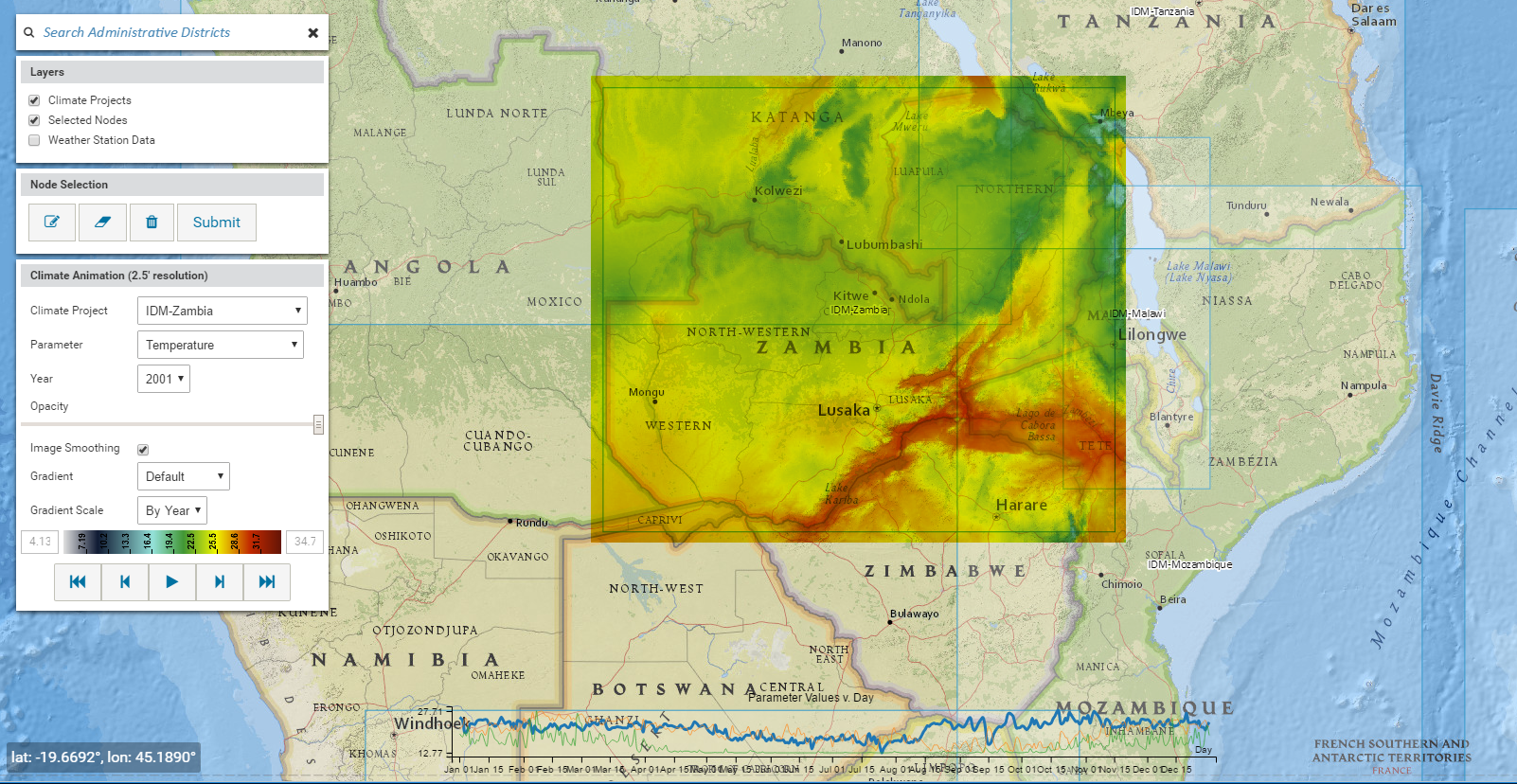Climate and demographics spatial data#
Climate is especially important in vector models, as it is a key determinant of the geographic distribution and seasonality of malaria. Climate, which includes rainfall, temperature, and humidity, directly influences availability of larval habitat, determines mosquito developmental and survival rates, and impacts human behavior that leads to contact with infectious mosquitoes.
This framework explores the impact of different locations and weather patterns in single node and multi-node geographies. It explores demographics data for births, deaths, age initialization and immunity. Climate and demographics spatial data is configured for a geographic location, such as a rainfall-driven larval habitat, to create a climate-based distribution model of malaria transmission. The seasonality of species abundances are considered, as are rainfall, temperature, humidity and larval dynamics. Mosquito species and seasonality are depicted by habitat preferences that are, for example, temporary, semi-permanent or permanent.
Clearly, climate and habitat type are inextricably linked. However, it is possible to have several types of habitat within a given climate region; for this reason, climate is configured separately from habitat type. You may choose from a variety of options to configure climate, ranging from pre-set classification systems to uploaded user data. Further, it is possible to enable stochasticity in climate as well as in rainfall patterns. For example, rainfall data may be based off of monthly totals averaged per day. In the simulation configuration file, the parameter Enable_Rainfall_Stochasticity will set up daily rainfalls drawn from an exponential distribution with the same daily mean. This preserves approximate monthly totals, but produces a more realistic rainfall pattern for the simulation. For more information on how to configure climate, see Climate files. And for more information on the particular habitat types that are configurable in EMOD see Larval habitat.

The EMOD vector model utilizes site-specific climate and demographics data to accurately simulate vector transmission in a given geographic location.#
For a complete list of demographics parameters, go to Demographics parameters.
Relevant IDM publications on spatial models#
Nikolov, et al., 2016. Malaria Elimination Campaigns in the Lake Kariba Region of Zambia: a Spatial Dynamical Model. PLOS Computational Biology.
Marshall, et al., 2016. Key traveler groups of relevance to spatial malaria transmission: a survey of movement patterns in four sub-Saharan African countries. Malaria Journal. 15(200)
Gerardin, et al., 2016. Optimal Population-Level Infection Detection Strategies for Malaria Control and Elimination in a Spatial Model of Malaria Transmission. PLOS Computational Biology.
Eckhoff, et al., 2015. From puddles to planet: modeling approaches to vector-borne diseases at varying resolution and scale. Current Opinion in Insect Science. 10:118-123
